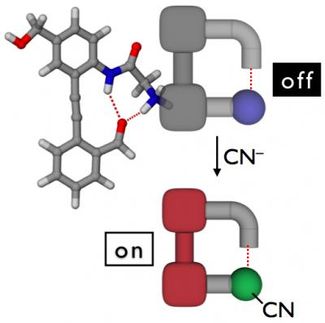Breakwater against Diabetes
A new approach to type II diabetes? "Beta-breaker" should break up incorrectly folded, destructive protein structures
Advertisement
Type II diabetes, also known as adult-onset diabetes, is starting to reach epidemic proportions. More and more young people are suffering from this disease. In the meantime, it has generally been agreed that in type II diabetes-as well as in Alzheimer's disease, Parkinson's disease, and "mad cow disease" BSE-incorrectly folded proteins are at the root of the disorder. These misfiled proteins clump together to form amyloid fibers, which form deposits that destroy the surrounding tissue. A key step in the formation of the amyloid deposits is the conversion of the correctly folded protein to a corrugated "ß-sheet" structure. This led to the idea of developing drugs that hinder this type of folding and break up the ß-sheets. Israeli scientists have now developed a new type of "beta-breaker."
The concept of beta-breakers is derived from short peptide chains that correspond to segments of the amyloid-forming proteins. The previously used peptide inhibitors have beta-breaking components, such as the amino acid proline, built into them. Sharon Gilead and Ehud Gazit have now come up with a substantially stronger beta-breaking amino acid, alpha-aminoisobutyric acid (Aib). Aib is basically nothing more than a molecule of the natural amino acid alanine, but with a methyl group (-CH3) replacing a hydrogen atom on the alpha-carbon atom. This additional methyl group considerably limits the flexibility of the molecule so that Aib is not able to adopt the spatial structure necessary to form a ß-sheet structure.
For a test subject, the team selected the peptide hormone amylin, which is stored together with insulin in the islets of Langerhans in the pancreas. It has a tendency to aggregate in the form of amyloid fibers, which destroys the cells of the islets, causing type II diabetes. The researchers copied the sequence of the peptide that they had previously determined as important for the intermolecular recognition and aggregation of incorrectly folded peptides. Within this sequence, they replaced two amino acids with Aib components-and the beta-breaker was complete. Because the modification does not disrupt the recognition process, the beta-breakers are deposited along with the amylin when it tries to aggregate into amyloid fibers. A ten-fold excess of the beta-breaker was able to drastically reduce the formation of amyloid fibers.
The same concept could also be used to produce beta-breakers for other proteins with a tendency to fold incorrectly. The researchers are thus hoping for a new generation of drugs to fight amyloid diseases.

























































